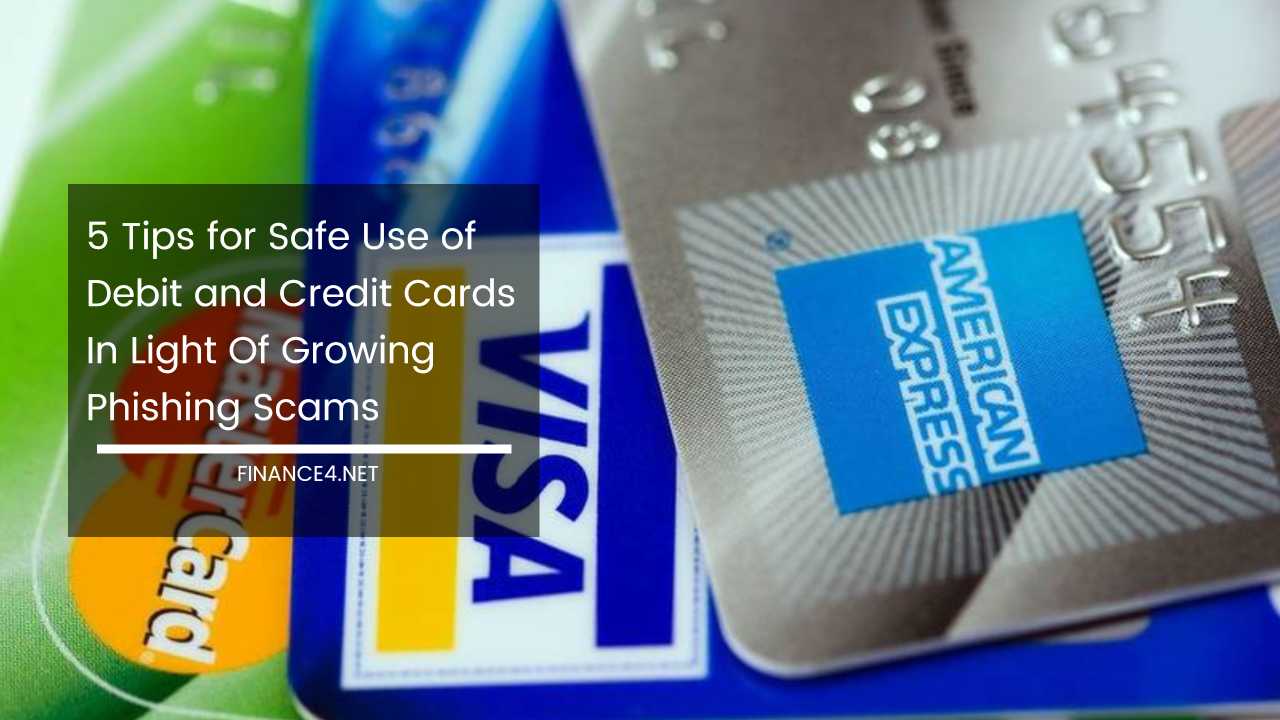5 Tips for Safe Use of Debit and Credit Cards in Light of Growing Phishing Scams

Fortressing Your Finances: A Comprehensive Guide to Combating Phishing Scams and Securing Debit/Credit Cards in the Digital Age
The modern world thrives on the convenience offered by debit and credit cards. These financial instruments have revolutionized the way we conduct transactions, eliminating the need to carry bulky cash and streamlining purchases. However, this ease of use comes with a hidden adversary – the ever-evolving threat of phishing scams.
Cybercriminals are constantly devising sophisticated methods to exploit the vulnerabilities inherent in the digital landscape.
Their primary objective: to steal personal information, particularly financial details, for their own nefarious gains. To combat these threats and ensure the safe and secure use of your debit/credit cards, a multi-pronged approach is necessary.
Building a Robust Password Defense:
The first line of defense lies in fortifying your online banking credentials. Regularly changing your passwords and PINs is crucial. Resist the urge to succumb to the convenience of using the same login information across different platforms. A data breach in one account can leave all others vulnerable if identical credentials are employed.
Embrace complexity when crafting your passwords. Incorporate a combination of uppercase and lowercase letters, numbers, and symbols. Avoid easily guessable information like birthdays or pet names, as these can be readily cracked by automated tools.
Maintaining Vigilance at ATMs:
The seemingly mundane act of using an ATM can be a prime target for fraudsters. When accessing your account at an ATM, prioritize well-lit, public locations with security personnel present. If you notice any suspicious activity or individuals lurking around, do not hesitate to walk away and seek a different ATM.
While entering your PIN, discreetly shield the keypad with your hand. This seemingly simple act serves as a significant deterrent against prying eyes and potential shoulder-surfers.
Constant Monitoring – Your Financial Lifeline:
Financial institutions provide online banking facilities that empower you to monitor your account activity in real-time. Make it a habit to regularly review your transaction history. Any unrecognized purchases or debits should be a red flag, prompting immediate action.
The sooner you report suspicious activity to your bank, the faster they can investigate the issue and potentially minimize financial losses. Time is of the essence in such situations; prompt action can significantly mitigate the damage caused by fraudulent transactions.
Maintaining Control of Your Card:
While handing your card to a server at a restaurant or a cashier at a store might seem convenient, it exposes your sensitive information. Refrain from relinquishing control of your card.
Whenever possible, accompany the server to the payment terminal to process the transaction yourself. This ensures your card remains under your direct supervision throughout the process.
Strategic Account Management (Optional):
For an additional layer of security, consider utilizing two separate checking accounts. Dedicate one account solely for essential bill payments, such as rent, mortgage, or other recurring debits.
The second account, designated for debit card purchases, should ideally maintain a lower balance. This strategy minimizes potential losses if the card is compromised or falls into the wrong hands.
Beyond the Basics: Bolstering Your Security Arsenal:
Guarding Your PIN: Always shield your hand when entering your PIN at ATMs or point-of-sale terminals. This simple act prevents unauthorized individuals from capturing this crucial information.
Wary of Helping Hands: Strangers might approach you, seeking your assistance in locating the CVV code on your card. Never disclose this confidential information under any circumstance.
Scrutinizing Communication:
Phishing scams often employ deceptive tactics. Emails and calls might appear legitimate, mimicking trusted institutions like banks or credit card companies. Always exercise caution when receiving unsolicited communication requesting personal or financial information.
Verification is Paramount: Refrain from clicking on suspicious links or attachments embedded within such emails. Contact your bank directly to verify the legitimacy of any communication supposedly originating from them.
Software Safeguards:
Install and maintain reputable anti-virus and anti-malware software on all your devices. These programs act as the first line of defense against malware that can steal your information.
Firewall Fortification: Ensure your devices have a robust firewall in place. This additional security layer helps shield your system from unauthorized access attempts.
Securing Online Transactions:
When shopping online, only visit websites with a secure connection. Look for the “https://” prefix in the address bar, indicating encrypted communication. This significantly hinders hackers from intercepting sensitive data during online transactions.
Card Verification Matters: During online transactions, be on the lookout for logos like “Verified by Visa” or “Mastercard SecureCode.” These additional authentication steps provide enhanced security.
Knowledge is Power: Educating Yourself:
Staying informed about the latest phishing scams and evolving security threats is crucial. Many financial institutions offer educational resources to their customers, keeping them updated on the current digital landscape.
Familiarize yourself with your bank’s security protocols and the fraud protection measures they offer. Understanding these procedures empowers you to respond effectively in the event of suspicious activity.
Reporting Suspicious Activity:
Immediate action is vital if you suspect your card has been compromised. Contact your bank without delay to report the situation. They can promptly deactivate your card, preventing further fraudulent transactions.
Consider filing a police report if you believe you have been a victim of fraud. This report serves as a crucial piece of documentation and can be instrumental in pursuing legal action against the perpetrators and potentially recovering stolen funds.
Beyond the Individual: Collective Responsibility:
The onus of safeguarding financial information doesn’t solely lie with individuals. Financial institutions also have a significant role to play.
- Advanced Security Measures: Banks should continuously implement and update robust security measures to protect their customers’ data. This includes employing advanced encryption techniques, multi-factor authentication protocols, and regular system audits to identify and address vulnerabilities.
- Customer Awareness Initiatives: Financial institutions must actively educate their customers about potential threats and best practices for securing their financial information.
- Prompt Action: When fraudulent activity is reported, banks should take swift action to investigate the matter, minimize financial losses for the customer, and collaborate with law enforcement agencies to apprehend the culprits.
The Evolving Threat Landscape:
Cybercriminals are constantly innovating and devising new methods to exploit weaknesses in the digital ecosystem. Staying ahead of these threats requires a collaborative effort from individuals, financial institutions, and regulatory bodies.
- Continuous Monitoring: Regulatory bodies should actively monitor the evolving threat landscape and implement stricter regulations to hold financial institutions accountable for upholding robust cybersecurity measures.
- Information Sharing: Collaboration and information sharing between financial institutions, law enforcement agencies, and cybersecurity experts are crucial for effectively combating cybercrime.
By adopting a multi-layered approach that combines individual vigilance, robust security protocols by financial institutions, and proactive measures by regulatory bodies, we can create a more secure digital environment for conducting financial transactions.
Remember, safeguarding your financial information requires constant vigilance and a commitment to following recommended security practices. By prioritizing these measures, you can significantly reduce the risk of falling prey to phishing scams and ensure the safe and secure use of your debit and credit cards.



